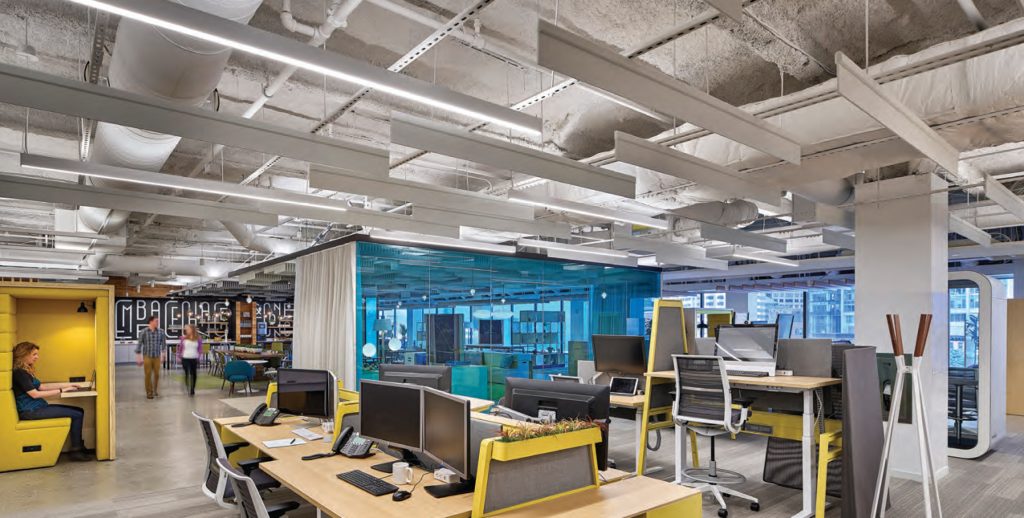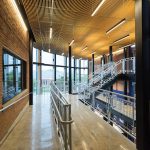Why Acoustic Lighting Matters Like Crazy to Office Productivity

The Mayo Clinic reports that glare and uncomfortable bright light are the two leading causes of eyestrain today, which hinders workplace productivity.
However, an improved lighting design can yield a 23% gain in productivity, according to the U.S. Green Building Council.
These findings should come as no surprise.
In recent years, LEDs have provided organizations substantial savings by reducing their energy and maintenance costs.
They’re also well-known, go-to resources for saving money by another method: increasing productivity via tunable lighting that rejuvenates your workforce better than a cup of coffee.
Yet another trend is emerging in LED’s “don’t miss out” cash savings, says Nick Brancato, Amerlux’s Northeast Executive Sales Director: acoustic lighting.
“There’s been more interest in acoustical integration with the ceiling and particularly LED lighting in recent years,” Brancato, a two-decade lighting veteran, says.
“The independent offices we used to know well are going away. A lot of these office applications today are open spaces with hard floors and hard walls,” he says.
“In the past, you couldn’t hear people six desks down from you on the phone. Today, you can because their conversation sounds bounce off the walls and the floors,” he adds.
According to research, it’s a distraction to many—and a hinder to workplace efficiency.
Take Leesman, a global business intelligence tool that measures and benchmarks how workplaces support employee and organizational performance. The organization reports that just 30% of occupants are happy with the noise levels in their offices.
Meanwhile, a study published in the British Journal of Psychology says “irrelevant noise” increases stress, decreases job satisfaction and disrupts work.
And per Forbes, between 25 and 30% of workers in open-plan offices are frustrated with the level noise and lack of sound privacy in their space.
These challenges, Brancato says, have been compounded by the increasing popularity of modern open-plan offices.
“These are contemporary designs that have amplified sounds with open or lofty ceilings,” he says.
These offices were initially designed to focus on space flexibility to promote team collaboration. However, their designs frequently overlooked the importance of offering comfortable, distraction-free environments—like those that cut glare, provide comfortable illumination and minimize ambient noise that serves as productivity-killing distractions.
“What we’re seeing more of now are requests for materials that go over lighting, materials that essentially serve as sound barriers to keep workplace sounds low,” Brancato says.
Amenities like lounge areas and cafes that often double as common work areas experience similar sound difficulties, he adds.
“We’re now seeing LED lighting used a tool for providing better workplace acoustics,” Brancato says.
The new robust, sound-absorbing solutions, according to research, differ. Some include LED lighting pendants with technical acoustic performance built into the design—think soothing sound bubbles for those beneath them. Other solutions include customizable spatial solutions that provide sufficient, even beautiful lighting and reduce surrounding ruckus and commotion.
“The goal,” Brancato says, “is to remedy these distractions with innovative, space-specific lighting systems that add aesthetics and keep unnecessary noise bouncing off the concrete, glass and hard floor surfaces in check.”
In other words, he says, “give the end-user a two-for-one deal that will boost their workplace. I think we’re going to hear a lot of those two joined forces moving forward.”
If you have more questions, we have more answers:

